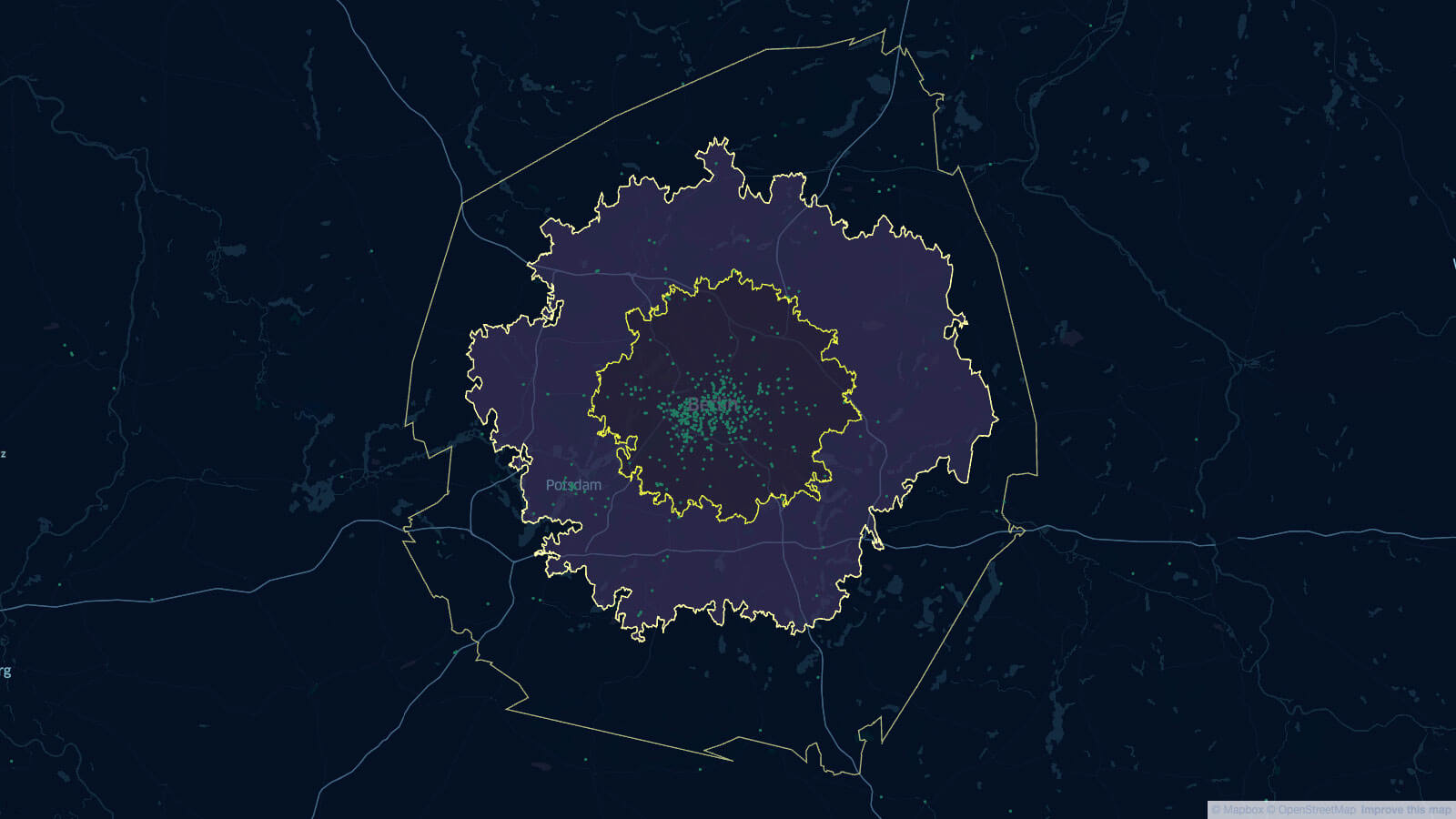Electric VehicleReach
How far can I drive with my electric car? Where should I stop to recharge on a long-distance journey? Will there be a charging point available?
These are just some examples for questions which are relevant to individuals driving an electric vehicle.
The two illustrations show with an isochrone approach what the reach with a specific state of charge would be.
Challenge
For fleet operators, no matter if carsharing, moped sharing or delivery operations, the question when to charge which vehicle can have a huge impact on operational cost. Downtime as well as moving an asset without generation of revenue both negatively impact the business.
An approach to this challenge can be based on routing optimization. For long-distance planning a set of variables like state of charge, routing preferences and constraints regarding the charging point need to be taken into consideration.

Approach
In the fleet operator case, additional complexity is introduced to the objective function: At what state of charge to take a vehicle offline will depend on expected rentals and additional distance travelled. There could also be the necessity to introduce a ranking algorithm which prioritizes charging and other service tasks across the fleet and the field workforce.
Lastly, a machine learning model is required not only to predict expected demand, but also ideally the availability of charging stations based on historical data to avoid situations where a charging point is not available. The simple video at the bottom shows changes in availability of charging stations. In many cases, operators will have several own charging points which can be taken into consideration as well.
Next Case Study
Tour Planning